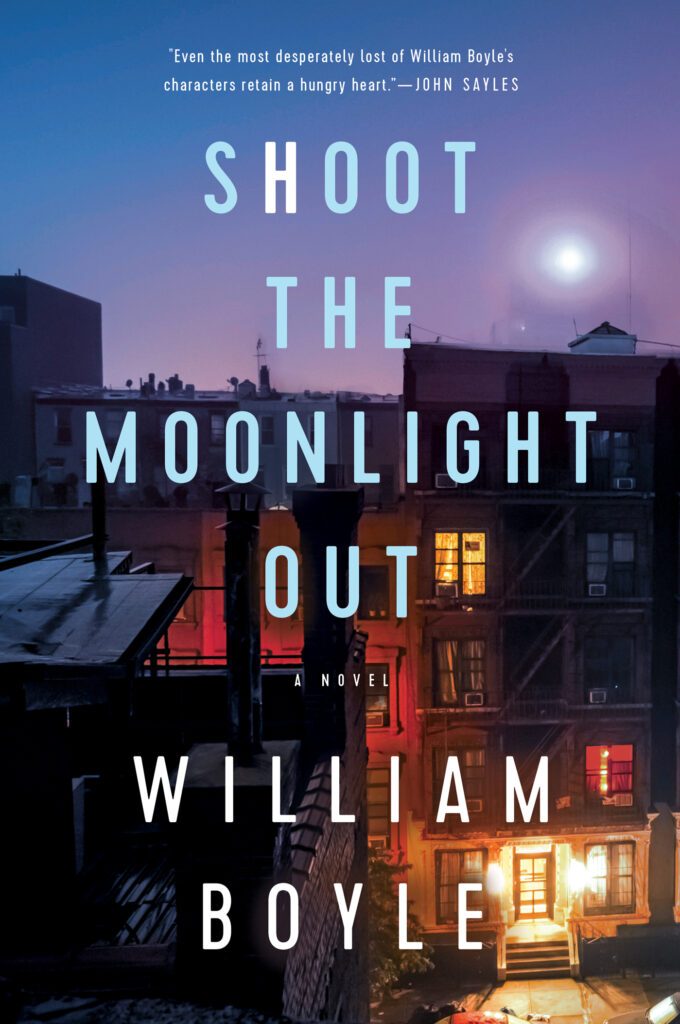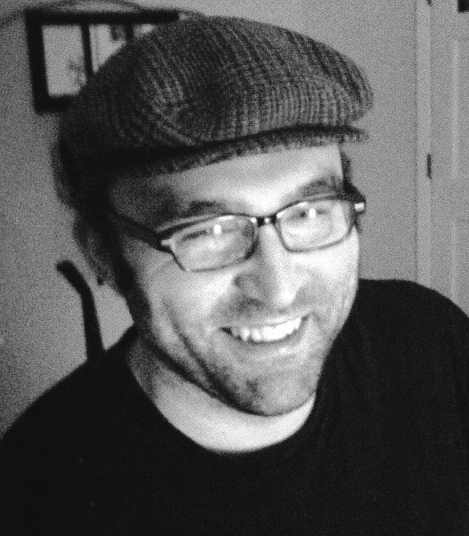William Boyle, Shoot the Moonlight Out (2021)
Reviewed by Lee Horsley
William Boyle is wonderfully skilled in creating vivid, memorable characters. In Shoot the Moonlight Out (2021), as in his earlier novels, he draws us into the encounters – whether quirky friendships, unexpected love or ill-conceived criminal transgressions – that upend the lives of those inhabiting their small corner of Brooklyn. It is a part of the city that Doyle knows intimately and that itself seems synonymous with the scarred lives of the characters who live there:
“The moon has settled over the neighbourhood like the fluorescent entrance to a tunnel-of-love carnival ride, spilling its light on the blacktop, on the hoods of cars and the Virgin Mary statues in weed-strewn front yards, on all the damaged windows and doors, on the cracks in the sidewalks and all the cracked hearts, on the rooftops, on the order and disorder, on all that’s hidden and all that’s out in the open.”
The course of people’s lives can be catastrophically disturbed by the most seemingly casual and thoughtless acts of violence. In Shoot the Moonlight Out, relationships and events have all been affected in one way or another by an accident that took place five years previously, when a boy heedlessly threw a rock at a passing car, causing the death of the young woman driving it.
The woman’s father, Jack, has never recovered: “she’s gone. Jack’s world stops.” But his isolation and grief begin to shift when he gets caught up in the lives of an ill-assorted cast of characters: amongst others, an aspiring novelist, Lily, who has just started a local writing group in St Mary’s Church; Max Berry, a sleazy ‘investment counsellor’ who runs a neighbourhood Ponzi scheme; Francesca, a young woman who dreams of being a filmmaker; Charlie French, a sadistic mobster; and ultimately Bobby Santavasco, the boy who accidentally killed Jack’s daughter. Characters are brought together in unexpected ways, as seemingly random acts collide and the damage done by the haphazardly thrown stone ripples out over the years.
Boyle’s characters are always a mixture of good and bad. Each has borne losses and disappointments, had misconceptions, made calamitous misjudgements. The stumbling decisions and actions of the characters themselves and their uncertainty about how to carry on with their damaged lives makes them intensely sympathetic. As they get to know one another, making overtures of friendship or stepping back in uncertainty, their movements all become part of a whole in which the larger ironies shadow their fumbling efforts to achieve justice and simply to survive. Out of their tangled crimes, loves and losses, Boyle crafts an intricate plot that is ultimately life-affirming and redemptive.
Lily reflects on the strange collisions of circumstance: “The world has been hard, is hard now and only getting harder. Lily thinks of Bobby throwing that rock. If he hadn’t thrown it, he wouldn’t have killed Amelia and maybe he wouldn’t have killed Max either. Maybe none of this would have happened…The future is a story she hasn’t written yet, wilder and more unpredictable than she could’ve anticipated.”
Like Boyle’s 2020 novel, A Friend is a Gift you Give Yourself (also reviewed on Crimeculture), Shoot the Moonlight Out is one of our favourite reads of the year. Highly recommended.
See also William Boyle’s fascinating contribution to Crimeculture’s new feature on writers’ favourite films and novels, A Hypothetical Triple Feature Inspired by Shoot the Moonlight Out.


